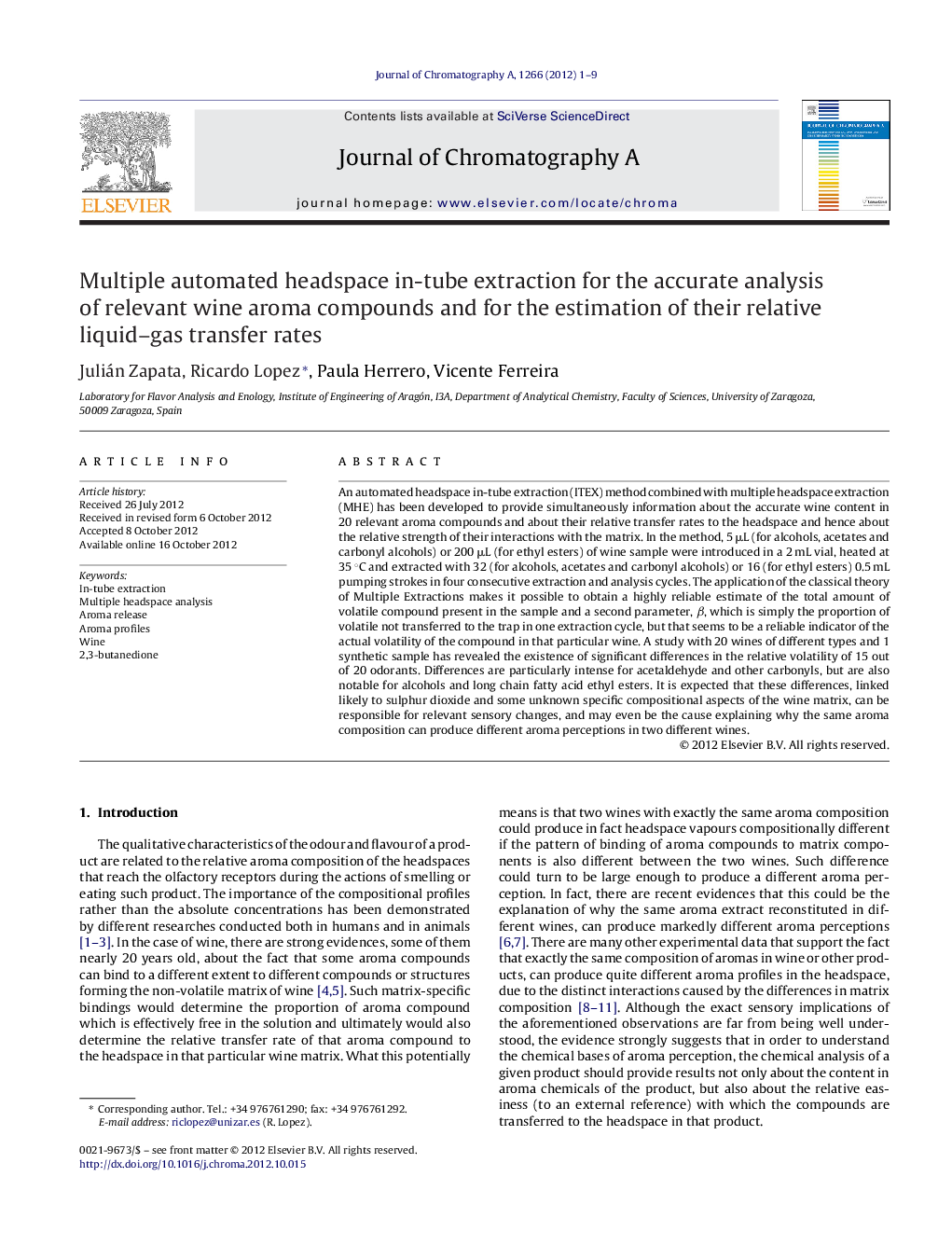| کد مقاله | کد نشریه | سال انتشار | مقاله انگلیسی | نسخه تمام متن |
|---|---|---|---|---|
| 1201609 | 1493659 | 2012 | 9 صفحه PDF | دانلود رایگان |

An automated headspace in-tube extraction (ITEX) method combined with multiple headspace extraction (MHE) has been developed to provide simultaneously information about the accurate wine content in 20 relevant aroma compounds and about their relative transfer rates to the headspace and hence about the relative strength of their interactions with the matrix. In the method, 5 μL (for alcohols, acetates and carbonyl alcohols) or 200 μL (for ethyl esters) of wine sample were introduced in a 2 mL vial, heated at 35 °C and extracted with 32 (for alcohols, acetates and carbonyl alcohols) or 16 (for ethyl esters) 0.5 mL pumping strokes in four consecutive extraction and analysis cycles. The application of the classical theory of Multiple Extractions makes it possible to obtain a highly reliable estimate of the total amount of volatile compound present in the sample and a second parameter, β, which is simply the proportion of volatile not transferred to the trap in one extraction cycle, but that seems to be a reliable indicator of the actual volatility of the compound in that particular wine. A study with 20 wines of different types and 1 synthetic sample has revealed the existence of significant differences in the relative volatility of 15 out of 20 odorants. Differences are particularly intense for acetaldehyde and other carbonyls, but are also notable for alcohols and long chain fatty acid ethyl esters. It is expected that these differences, linked likely to sulphur dioxide and some unknown specific compositional aspects of the wine matrix, can be responsible for relevant sensory changes, and may even be the cause explaining why the same aroma composition can produce different aroma perceptions in two different wines.
► We develop a multiple headspace in-tube extraction method to analyse wine volatiles.
► We validate this method to quantify 20 wine volatiles and we apply it to 21 wines.
► With the method we measure the relative liquid–gas transfer rates of the analytes.
► The method reveals differences in volatily for analytes in different wines.
Journal: Journal of Chromatography A - Volume 1266, 30 November 2012, Pages 1–9